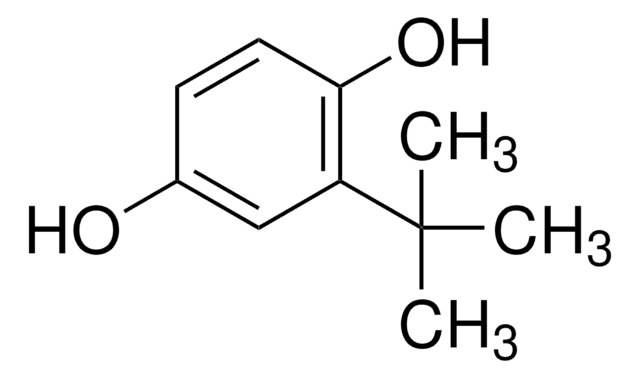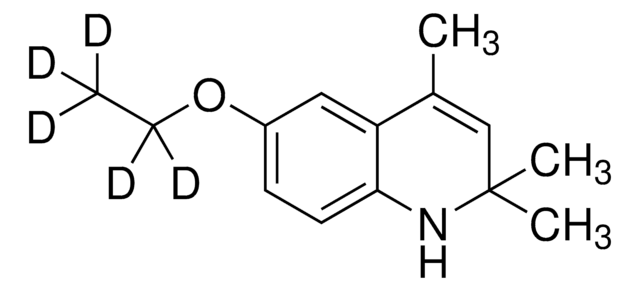78943
Hydroxyanisole butylé
analytical standard
Synonyme(s) :
2(3)-t-Butyl-4-hydroxyanisole, BHA, Éther monométhylique de la 2(3)-t-butylhydroquinone, 2(3)-t-Butylhydroquinone monométhyl éther
About This Item
Produits recommandés
Niveau de qualité
Qualité
analytical standard
Densité de vapeur
6.2 (vs air)
Pureté
≥99.0% (sum of isomers, GC)
Température d'inflammation spontanée
599 °F
Durée de conservation
limited shelf life, expiry date on the label
Technique(s)
HPLC: suitable
gas chromatography (GC): suitable
Pf
58-60 °C (lit.)
Application(s)
cleaning products
cosmetics
food and beverages
personal care
Format
neat
InChI
1S/C11H16O2/c1-11(2,3)9-7-8(13-4)5-6-10(9)12/h5-7,12H,1-4H3
Clé InChI
MRBKEAMVRSLQPH-UHFFFAOYSA-N
Vous recherchez des produits similaires ? Visite Guide de comparaison des produits
Description générale
Application
- Food samples using square-wave voltammetry (SWV), further confirmed by high-performance liquid chromatography technique (HPLC) and capillary electrophoresis (CE) coupled with end-column amperometric detection.
- Cosmetics using fluorescence spectroscopy with second-order calibration, further confirmed by HPLC technique.
Mentions de danger
Conseils de prudence
Classification des risques
Aquatic Chronic 2
Code de la classe de stockage
11 - Combustible Solids
Classe de danger pour l'eau (WGK)
WGK 2
Point d'éclair (°F)
241.9 °F - Pensky-Martens closed cup
Point d'éclair (°C)
116.6 °C - Pensky-Martens closed cup
Faites votre choix parmi les versions les plus récentes :
Déjà en possession de ce produit ?
Retrouvez la documentation relative aux produits que vous avez récemment achetés dans la Bibliothèque de documents.
Les clients ont également consulté
Notre équipe de scientifiques dispose d'une expérience dans tous les secteurs de la recherche, notamment en sciences de la vie, science des matériaux, synthèse chimique, chromatographie, analyse et dans de nombreux autres domaines..
Contacter notre Service technique






